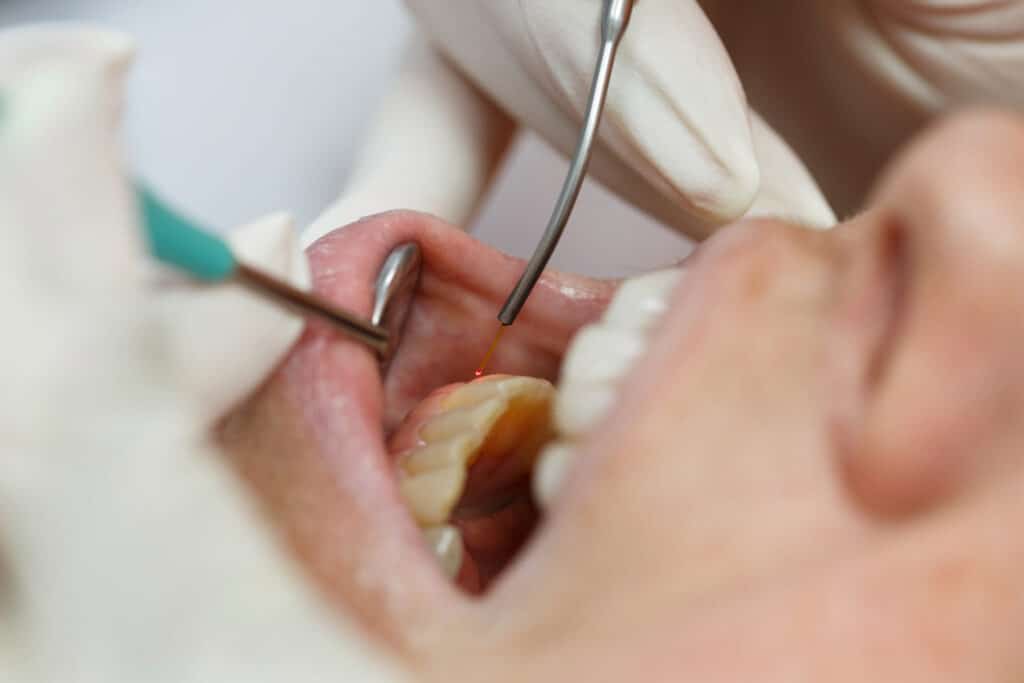
If you have an unwanted cavity, you’re not alone. The odds are that you may get one in your lifetime. According to the National Institute of Dental and Craniofacial Research, 92% of adults aged 20 to 64 have at least one cavity. When dental decay strikes, you have two options for treatment: laser cavity removal and traditional dental drills. Which option is better? Continue reading to discover the differences.
Which type of treatment is more gentle?
Compared to traditional dental drills, a significant advantage of laser cavity removal is that it is much more mild and quiet. For this reason, lasers may reduce the need for:
- -Anesthesia: Laser dentistry is virtually pain-free, and many laser treatments do not require an anesthetic.
- -Sedation: Some patients associate dental drills with dental anxiety and phobia. Forgoing drills altogether may make the experience more comfortable because no vibration or scary sounds are involved.
Which type of treatment is more precise?
Laser technology is much more precise than traditional dental drills. The Waterlase® laser combines the power of water, air, and laser energy to safely target damaged tissue and bacteria in the mouth. Also, lasers immediately cauterize the wound after application, which helps reduce the risk of bleeding and infection. Both of these factors aid in the tooth’s long-term health.
However, it’s important to mention that laser cavity treatment works best for cavities that do not reach beneath the gum line and are smaller in size. Despite limitations, dentists use lasers to create a cleaner cut in the hard dental tissue so that the dental filling will attach nicely once it’s established.
Which type of treatment is more affordable?
Laser cavity treatment and non-laser treatment can vary in price, largely dependent on:
- -The type of procedure performed
- -The type of laser equipment used
- -If anesthesia is needed to numb the area
- -Type of material used to fill the treated cavity
A common misconception about laser dentistry is that it’s more expensive than traditional dentistry since cosmetic dentists often use lasers for gum contouring and other cosmetic treatments. Cosmetic laser dentistry, such as gum contouring, is not typically covered by dental insurance. Usually, insurance defines total reimbursement based on the treatment itself and not the method employed. Whether with lasers or drills, dental insurance providers typically cover nearly all costs associated with cavity removal treatment and fillings.
Also, as opposed to non-laser treatment, laser treatment may be less expensive because laser dentists can typically complete the therapy in fewer sessions. However, it’s essential to ask your policyholders beforehand. Your dental insurance provider can give you the most accurate information regarding your coverage. If insurance is not an option, some dentists offer in-house dental plans to cover some of the costs of laser cavity removal and other treatments.
Schedule an Appointment for Laser Cavity Removal in Austin, TX
No matter the size, a cavity is a big deal, and immediate treatment can save your tooth from extraction. If you want to experience contemporary laser cavity removal, it’s time to find a qualified dentist in your area who has received the appropriate training.
At Austin Laser Dentist, Dr. Helen Ragsdale offers laser cavity removal and other gentle, precise, and affordable dentistry methods. Additionally, Dr. Ragsdale is a Fellow at WCLI (World Clinical Laser Institute) and has received additional advanced training in laser dentistry at LVI (Las Vegas Institute for Advanced Dental Studies). Reach out to us by calling (512) 346-4690 or messaging us online right now.
